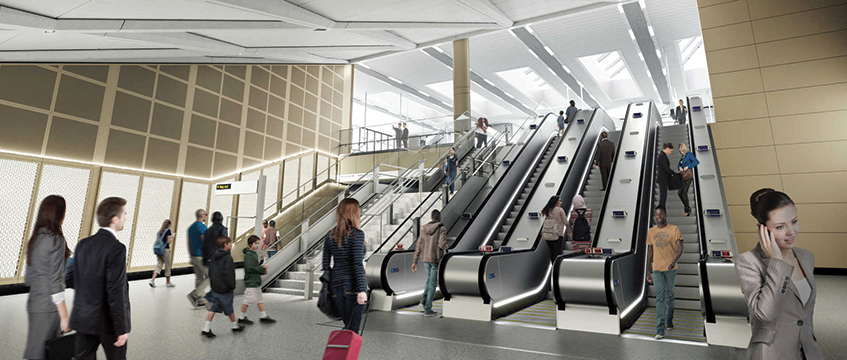Owners of 315,000 residential properties across the capital could be hit by a potential new tax to pay for Crossrail 2, according to research from EG’s Radius Data Exchange.
The homeowners would pay a combined £120m annually, with those living closest to the station paying up to £520 pa.
The new tax would be applied as part of council tax for more than a decade if the Surrey to Hertfordshire route is approved. Stations that will attract the charge include Kingston, Surbiton and Raynes Park
Want to embed our Crossrail2 tax postcode finder tool in your own site? Just copy the code at the bottom of this article.
At EG’s London Residential Summit earlier this month, Crossrail 2 consultant William Jackson revealed plans for a transport property charge within a 1km “zone of influence” around each of the proposed 35 Crossrail 2 London stations, saying that “those that stand to benefit should pay”.
The infrastructure project is expected to cost £30bn to build. With around 3.4m dwellings across the capital, the number of affected households reflects around 9% of all London homes.
The land within a 1km radius of these 36 stations comprises 28,000 acres, which is about 6% of the GLA legislative boundary.
Who will be hit?
Those living around proposed Crossrail 2 stations could be hit by charges of up to £520 per year.
Each zone would be split into three equally sized, concentric circles at 330m, 660m and 1km distances, with those homes closest to the stations paying the highest rates.
Crossrail 2 is considering two models. The model that would see homeowners pay the most would involve a £10 per week charge for those in the closest ring around a station, £7.50 per week in the middle ring and £5 per week in the outer ring.
Under the less costly model, households would be charged on an annual basis, with those closest to the station paying £300, those in the middle ring £200 and those in the outer ring £100. Under this model, less than half as much would be raised for the project, totalling £59m each year.
Crossrail 2 is also considering how it can charge the owners of offices, shops and other commercial property around the stations.
On top of the 35 proposed London stations, a further 12 stations outside the capital are planned. People living near these could see charges imposed but these would likely need to be implemented and agreed individually with local councils.
The charging model that would hit Londoners the hardest would raise £1.2bn over a 10-year period.
This would still be a fraction of the total £30bn. The remainder is expected to be paid from passenger fares, increased business rates and central government.
Testing finance models
An independent funding and financing review for the project is testing models such as the one outlined by Jackson. An application is due to be made to parliament to build Crossrail 2 in 2021 or 2022 with the aim of it being open to the public in the early 2030s.
Paul Wellman, senior analyst at EG, said: “This will be an extra charge for those already struggling with housing affordability. Although homeowners are expected to benefit from Crossrail 2 over the long term, it will be the tenants rather than the landlords who will likely carry the burden of the increase in council tax.
“It is understandable and rational that Transport for London will want to capture some of the uplift in values, especially with the UK government expecting London, rather than central government, to pay the bulk of its cost.
“Opening up the debate as to who should pay, and how, appears to be getting into full swing.”
Embed the EG Crossrail2 tax postcode finder tool on your own website. Copy and paste this code:
<iframe width=”100%” height=”520″ frameborder=”0″ src=”https://egdata.carto.com/builder/c52efb74-551f-408a-a6f5-35ab86b0fc93/embed” allowfullscreen webkitallowfullscreen mozallowfullscreen oallowfullscreen msallowfullscreen></iframe>











